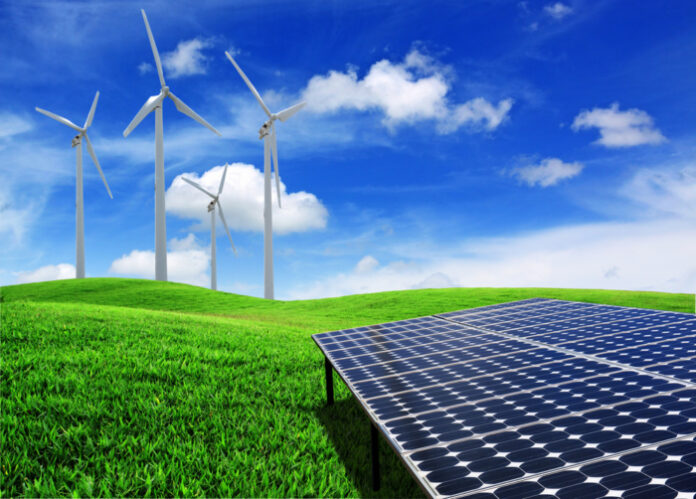Renewable energy is becoming increasingly popular as people look for ways to reduce their carbon footprint and become more sustainable. Experts like Neville Voss in Hampshire, UK, say renewable energy sources, such as solar, wind, geothermal, and hydroelectric power, provide clean alternatives to traditional energy sources like coal or natural gas. In this blog post, we’ll explore some of the most popular aspects of renewable energy and why they have become so popular in recent years.
Solar Power
Neville Voss says solar power is one of the most popular forms of renewable energy. Solar panels can be installed on roofs to capture the sun’s energy and convert it into electricity. Solar power is beautiful because it does not require any fuel and can produce electricity for free once installation costs are paid off. Solar energy is versatile; it can generate electricity for homes and businesses, heat water, or even run a car!
Wind Power
Wind turbines are another popular form of renewable energy that has recently seen a surge in popularity. Wind turbines harness the power of the wind by converting its kinetic energy into electrical power. The amount of electricity generated depends on several factors, including location, size, type, and efficiency of the turbine being used. Wind turbines do not rely on fuel and can generate large amounts of electricity with minimal maintenance required once installed.
Geothermal Energy
Geothermal energy has been gaining traction recently due to its low emissions, renewable nature, and ability to provide reliable base-load capacity when combined with other forms of renewable energy, such as solar or wind power. Geothermal plants use underground reservoirs of hot water or steam, which are tapped to generate electricity; these reservoirs are heated naturally by the earth’s core temperature, which remains relatively constant regardless of external weather conditions, making them a reliable source year-round. Geothermal plants also require minimal land space compared to other forms of renewable energy, such as solar or wind farms, making them ideal for areas where land availability is limited.
Hydroelectricity
Neville Voss says hydroelectricity is another form of renewable energy that has been around since ancient times but has seen a resurgence in popularity due to its low environmental impact and cost efficiency compared to other forms such as nuclear or fossil fuels. Hydroelectric plants use running water from rivers or lakes to turn turbines that generate electricity; this makes them a desirable option for areas near bodies of water where construction costs are lower than those associated with building a new plant from scratch elsewhere. Hydroelectricity also produces no emissions making it one of the cleanest forms of generation available today.
How to Get Started with Renewable Energy
Renewable energy is a growing trend in modern society that pays to get on board with. The benefits of renewable energy are clear — an environmentally friendly source of power, savings in costs over time, and attractive tax breaks at various levels. But getting started with renewable energy can seem like an intimidating prospect. With that in mind, take it step by step.
First, research options: review the available renewable resources in your area and assess if your property is suitable for solar or wind power systems. Secondly, Neville Voss says to contact renewable energy professionals for advice and guidance to determine what will be best for you. Lastly, get competitive quotes from certified sellers to estimate the system cost and potential savings from transitioning to renewable energy. Investing in renewable energy may be a significant upfront cost, but the rewards include being more sustainable and saving money on bills over time; everyone loves more disposable income!
How to Know When It’s Time to Upgrade
Renewable energy technology is rapidly advancing, and there are often new developments in efficiency or cost that make upgrading to a unique system worthwhile. When considering an upgrade, think about the following.
First, consider the current state of your system. Has it been functioning well and providing you with reliable power? If not, then an upgrade may be necessary to restore performance. Second, evaluate if your system is more than five years old; newer technology and improved efficiency can significantly reduce electricity costs. Third, assess if incentives or tax credits are available for upgrading to a unique system. Lastly, investigate if subsidies are available to help offset the installation cost and make it more affordable.
Conclusion
Neville Voss says renewable energies have grown increasingly popular over recent years due to their environmental friendliness and cost savings potential compared with traditional sources like coal or natural gas — all without sacrificing reliability or stability. Solar, wind, geothermal, and hydroelectric energies offer diverse solutions suitable for residential applications, such as powering homes with rooftop solar panels up to large-scale industrial projects like building massive offshore wind farms capable of producing hundreds of megawatts worth of electricity — enough to entirely power cities! With technology advancing at an ever-increasing rate, renewables will likely continue gaining ground against traditional sources in terms of both popularity and market share in the coming years. Now is the perfect time for individuals and businesses alike to invest in greener solutions!
Find a Home-Based Business to Start-Up >>> Hundreds of Business Listings.

















































